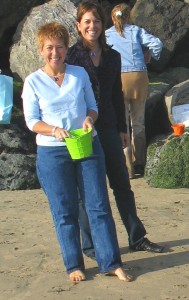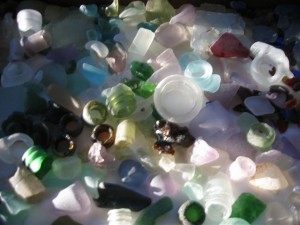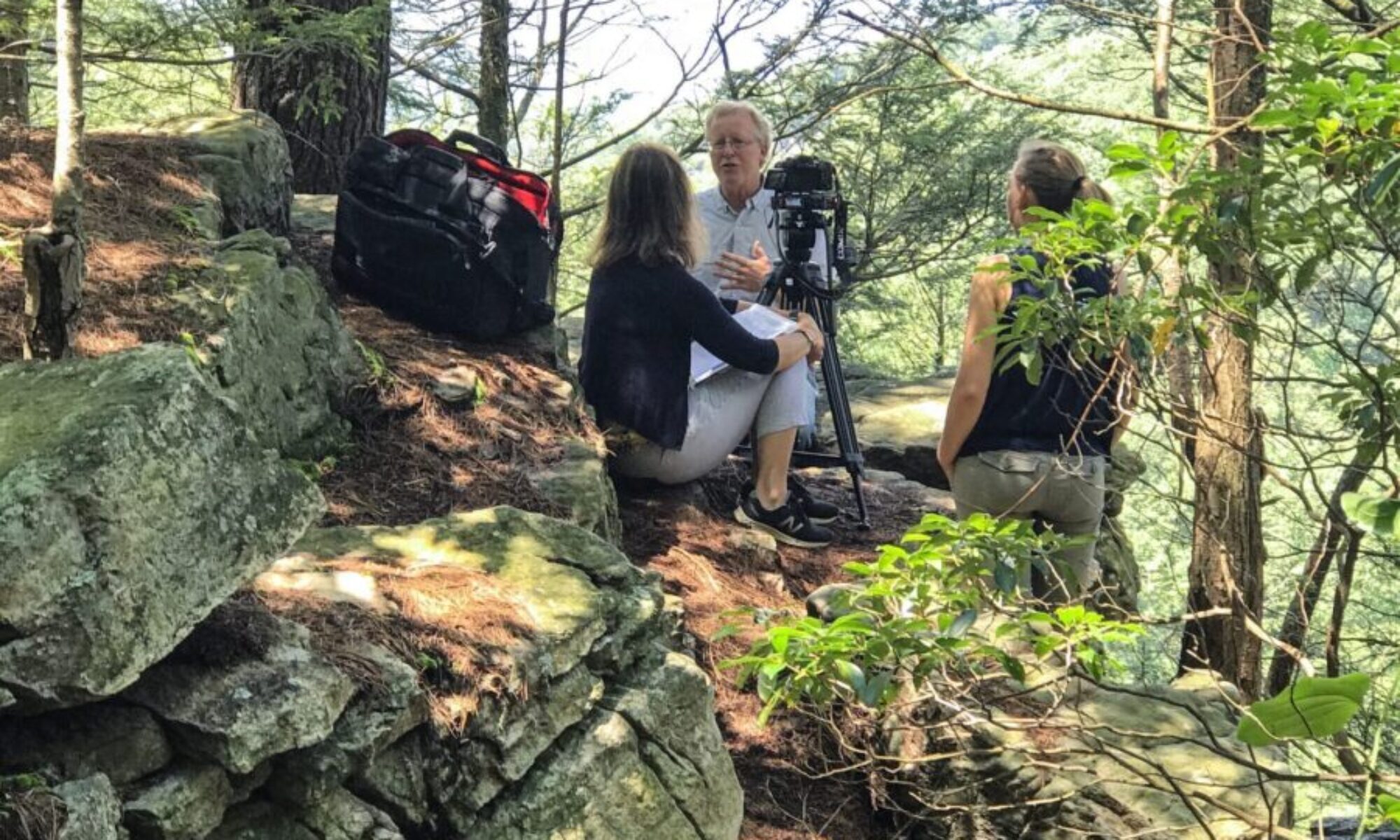At low tide in a secluded cove on Narragansett Bay in Newport, Rhode Island, Suegray Fitzpatrick begins her quest. She beaches her kayak onto the sand, walks to the water’s edge, and pulls out a Ziploc baggie she hopes to fill with bits of rare blue or turquoise, but more likely white, green and brown.
 Fitzpatrick is a sea glass collector and jewelry maker, who frequently explores the region’s little known rocky beaches for frosted glass shards nature has formed into precious gems. These glass bits sooner or later wind up as jewelry or decorative objects that she crafts in her Newport home.
Fitzpatrick is a sea glass collector and jewelry maker, who frequently explores the region’s little known rocky beaches for frosted glass shards nature has formed into precious gems. These glass bits sooner or later wind up as jewelry or decorative objects that she crafts in her Newport home.
The hobby of sea glass collecting is equal parts history, archeology, and chemistry, as I reported in Fortune Small Business. Collector Louise Rogers seeks uncommon colors such as orange and red, which are her Holy Grail. She also favors glass embossed with identifiable patterns or labels, such as the word “Hood” from the Charlestown, Mass., dairy’s milk bottles. All sea glass is becoming less common as more glass is recycled and plastic bottles become the norm.
While sea glass is widely available for purchase – a turquoise piece fetched more than $250 on eBay – Rogers prefers finding her own. Vacations to shoreline destinations feed her collection. A few years ago she traveled to Peaks Island in Maine’s Casco Bay, where she found a china doll’s arm. “My first body part!” she says.
 So, why all the fuss over fragments? “People know that sea glass is becoming a rare commodity,” says Richard LaMotte, author of Pure Sea Glass, a collectors’ guide. The colorful baubles are actually rubbish–glass shards that have been polished smooth by waves, sand, and stone.
So, why all the fuss over fragments? “People know that sea glass is becoming a rare commodity,” says Richard LaMotte, author of Pure Sea Glass, a collectors’ guide. The colorful baubles are actually rubbish–glass shards that have been polished smooth by waves, sand, and stone.
I met LaMotte when I reported on the first meeting of the North America Sea Glass Association in Santa Cruz, California, for Coastal Living Magazine in 2006. I regularly found sea glass on my daily beach walks when I lived in Rhode Island, but noticed it was hard to come by in recent years. LaMotte explained that improved waste management practices as well as a marked increase in the use of plastic for drink containers was making sea glass more rare.
Cornelia Dean featured such sea glass collectors in the New York Times Science section recently. In her story about the 5th annual sea glass competition, she quoted LaMotte, who is dead against the rising practice of seeding beaches with broken glass:
If the association is firm against manufacturing sea glass, there is less agreement on “seeding” beaches with glass. Though some collectors already engage in the practice, Mr. LaMotte sees obvious safety and environmental problems with putting broken glass on the beach. Anyway, Ms. Lambert said, it might take 50 or 100 years for a piece of broken glass seeded on a beach to achieve the patina of sea glass. “Until then, it’s just trash.”
Two years ago I searched for sea glass on a trip to Eleuthera, Bahamas. Like Rogers, I was looking for a surprise. I expected to find one or two collectible bits of red, blue or aqua glass–formed by the unique properties of degradation due to a different salt content in those waters, from unusual polishing due to the pink sand beach, or from a different culture of waste disposal. What I found, instead, was a million little pieces of plastic–orange, blue, white, and red confetti from laundry soap bottles and other cartons. This was my surprise.

When it comes to the debate about seeding beaches with glass the most basic point to remember is that it is illegal. Littering or dumping at sea is never justifiable. In civilized nations littering and dumping at sea is against the law and these laws should be respected.
Enjoyed this piece linked to me by Frank DuBois; we went to school together..elementary and beyond. I was at the Santa Cruz first sea glass festival, my booth was right beside Sue’s. I also am in the Sea glass/ jewelry business. One thing that I keep wanting to address without stepping on the toes of my colleagues is the drilling of sea glass. After all if it is a collector’s item as we say then why would we drill a hole in it. I am a non-driller yet reluctant to make an issue of it but maybe you could find an angle on it.
I seed, but I doubt my few offerings will make much difference. I hate that all the rare colors for glass are so common for plastic, so I only seed in rare colors. CLEAN UP YOUR PLASTIC, PEOPLE.